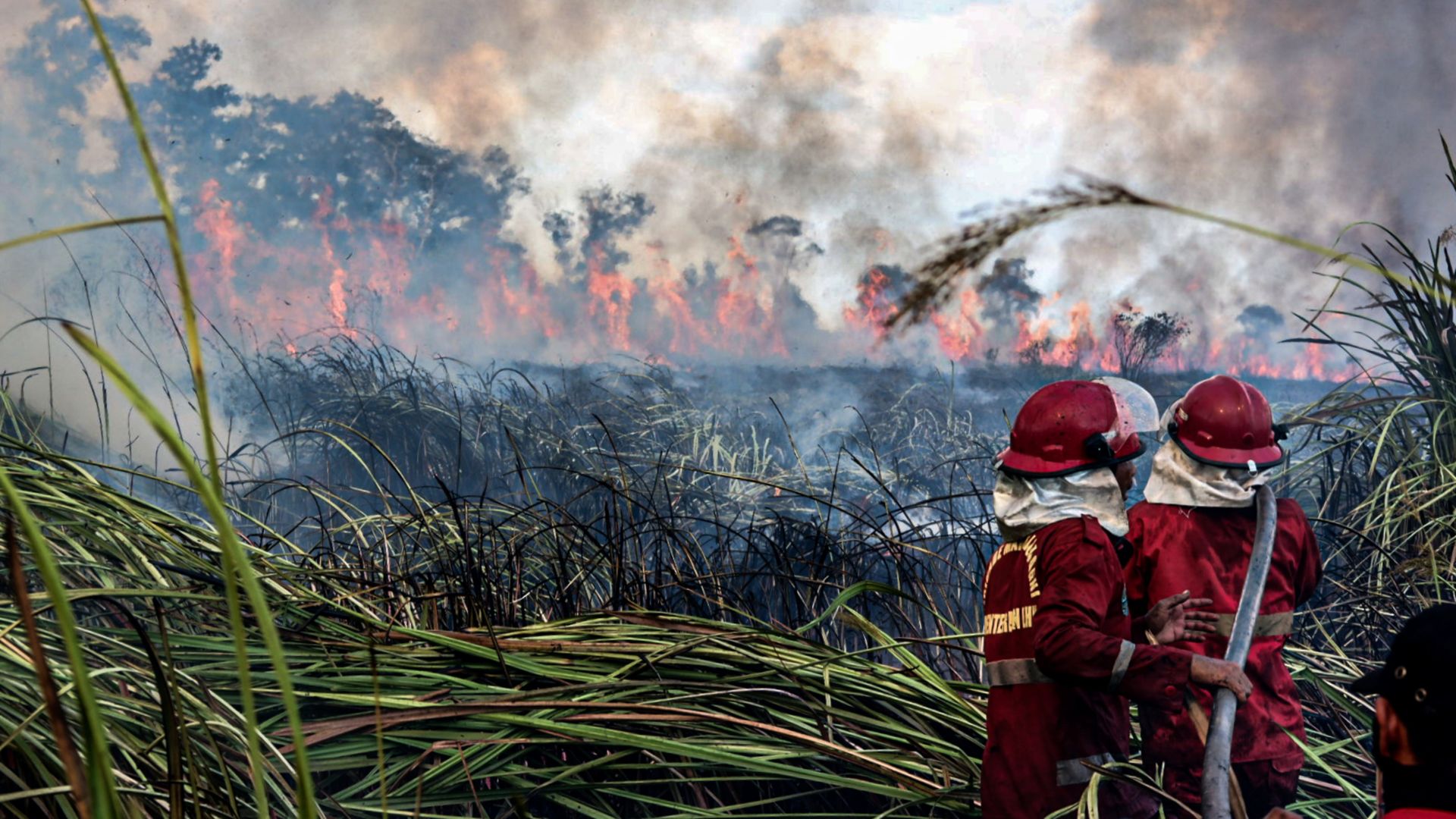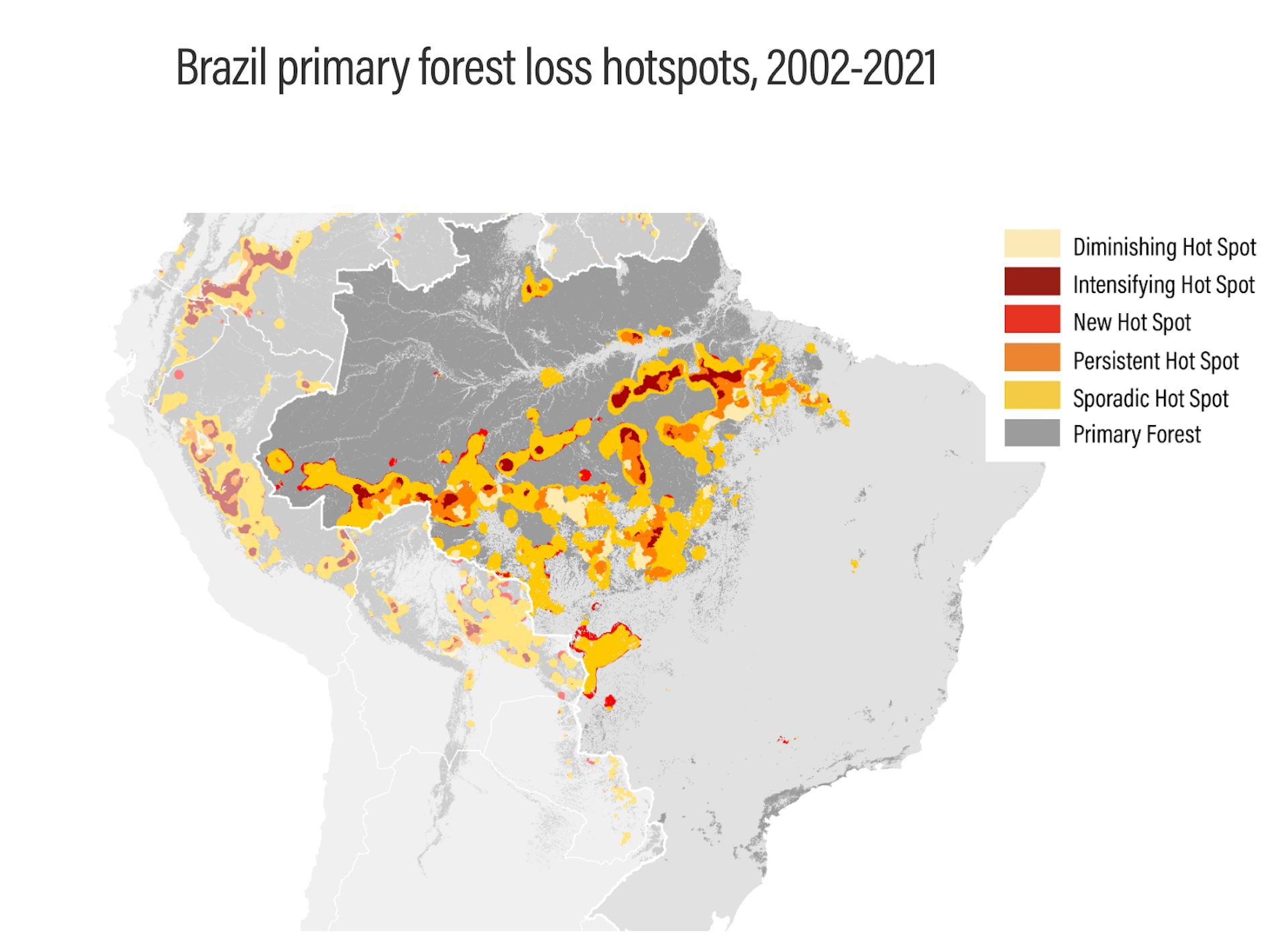Tropical forest losses emitted as much CO2 emissions as India in 2021

- Andrew Freedman, author ofAxios Generate

Indonesian firefighters try to extinguish peatland fire in South Sumatra, Indonesia, last August. Photo: Muhammad A.F/Anadolu Agency via Getty Images
The loss of humid tropical rainforests continued at a blistering pace in 2021, contributing 2.5 billion tons of carbon dioxide emissions, which is equivalent to the annual fossil fuel co2 emissions of India – the world's fourth largest emitter, an authoritative new report finds.
Why it matters: The report, put together by Global Forest Watch and the University of Maryland, shows the stark challenge of reining in forest loss.
- Forests are a key repository of carbon, which, if released into the atmosphere, will accelerate human-caused global warming. Protecting forests, particularly those that are rich in stored carbon such as tropical forests, is a key component of plans to curb global warming.
Driving the news: At the Glasgow Climate Summit, 141 countries committed to "halt and reverse forest loss by 2030."
- The annual forest loss report is based on satellite monitoring and on-the-ground observations, and reveals how each country’s domestic policies are either limiting the clearing of trees for agricultural use and road building, or encouraging it.
- The report finds that the tropics alone lost 27.5 million acres of tree cover during 2021, with 9.3 million acres of that taking place in humid tropical primary forests.
- This is equivalent to the total acreage of Vermont, New Hampshire, Maine, Massachusetts, Connecticut, Rhode Island and New Jersey.
How it works: Tropical primary forests are areas of natural, mature, humid tropical forest cover that have not been cleared and regrown in recent history. They tend to be cradles of biodiversity.
- Tree cover loss refers to the removal of tree cover due to either human or natural causes, including wildfires. If trees are not given the chance to grow back, then these losses will have contributed to deforestation.
The intrigue: Most of the 2021 forest loss had already happened before world leaders made their Glasgow commitment, said Frances Seymour, a senior fellow with the World Resources Institute, a nonprofit environmental group that helps run Global Forest Watch, during a media conference call.
- She said the new data should serve as a baseline for leaders' actions to come, but their steps will have to be "dramatic" if they are to be effective.

By the numbers: The top 10 list of countries for tropical primary forest loss last year was topped once again by Brazil, followed by the Democratic Republic of the Congo, Bolivia, Indonesia, Peru, Colombia, Cameroon, Laos, Malaysia and Cambodia, respectively.
- Indonesia saw a 25% drop in primary forest loss compared to 2020, which was the fifth-straight year in which its forest loss rate declined. The report credits policy measures, such as efforts to reduce illegal palm oil plantations, for this decline.
- Brazil accounted for 40% of tropical primary forest loss, continuing trends seen under President Jair Bolsonaro. The report shows a 25% uptick in primary forest loss in the western states of the Amazon basin, which it traced to cattle ranching and road-building.
- Bolivia's primary forest loss hit its highest rate on record last year, with 0.7 million acres lost.
What they’re saying: Seymour said not enough is being done to support and reward countries for conserving their forests.
Between the lines: Demonstrating the urgency of preserving the Amazon, recent studies have shown portions of the vast rainforest may be close to a tipping point of transitioning into a drier savannah, with worldwide consequences.
- High forest loss rates are not limited to the tropics, however. Northern boreal forests had their highest rate of tree cover loss on record in 2021, with 16.1 million acres lost, mainly due to wildfires.
- Russia saw its worst wildfire season on record, with vast clouds of smoke traveling from Siberia to the Western U.S.
Threat level: In Russia, for example, hotter temperatures are drying forests out and enabling fires to start earlier and burn later into the summer, while expanding the areas that see these blazes.
- "Climate change itself is making it harder to maintain the forest that we still have," Seymour said.